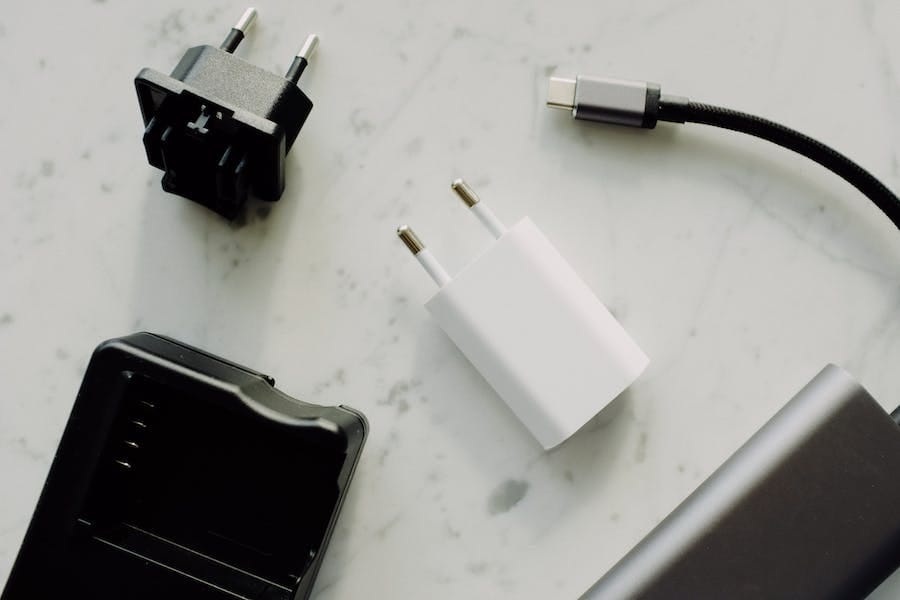In the rapidly evolving landscape of modern technology, the terms “Thunderbolt 3” and “USB-C” often find themselves entangled in a web of confusion. Are they one and the same, or do they represent distinct technologies? This article aims to shed light on this common conundrum by offering a comprehensive comparison between Thunderbolt 3 and USB-C. Understanding the differences between these two connectivity standards is vital in an era where the choice of port can significantly impact data transfer speeds, power delivery, display capabilities, and compatibility with a multitude of devices. Join us on a journey to demystify Thunderbolt 3 and USB-C, empowering you to make informed decisions in our increasingly connected world.
Is Thunderbolt 3 The Same As USB C?
No, Thunderbolt 3 and USB-C are not the same. Thunderbolt 3 is a high-speed data transfer and display technology that can use USB-C connectors, but Thunderbolt 3 offers significantly faster data transfer rates and additional features like daisy-chaining and higher power delivery compared to standard USB-C.
Key Differences Between Thunderbolt 3 And USB-C
The key differences between Thunderbolt 3 and USB-C are:
Thunderbolt 3 offers much faster data transfer speeds, up to 40 Gbps, while USB-C typically ranges from 5 Gbps (USB 3.1 Gen 1) to 10 Gbps (USB 3.1 Gen 2).
Power Delivery:
Thunderbolt 3 provides higher power delivery, up to 100W, for charging laptops and powering peripherals, while USB-C has varying power delivery capabilities depending on the device and standards used.
Display Capabilities:
Thunderbolt 3 supports multiple high-resolution displays and daisy-chaining, whereas USB-C has limited display capabilities, often requiring separate adapters.
Peripheral Support:
Thunderbolt 3 allows daisy-chaining of multiple devices, creating a versatile ecosystem, while USB-C has limitations in this regard.
Compatibility:
Thunderbolt 3 devices may not work with standard USB-C ports, whereas USB-C devices are generally compatible with Thunderbolt 3 ports.
Cost:
Thunderbolt 3 technology is more expensive to implement compared to USB-C. Understanding these differences is crucial when choosing the right connector for your specific needs.
Importance Of Understanding The Differences
Understanding the differences between Thunderbolt 3 and USB-C is of paramount importance in today’s tech-centric world. These distinctions have significant implications for device compatibility, data transfer speeds, power delivery, and overall user experience. Here’s why it’s crucial to grasp these disparities:
- Optimizing Device Performance: Knowing the differences enables users to choose the right connection for their specific needs. For instance, Thunderbolt 3 is ideal for professionals who require lightning-fast data transfer and multiple displays, while USB-C suffices for everyday users. By making informed choices, users can optimize their device’s performance.
- Preventing Compatibility Issues: Mismatched connectors can lead to compatibility problems. Understanding that Thunderbolt 3 and USB-C are not always interchangeable prevents frustrations like devices not working as expected, incorrect cables, or inadequate power delivery. This knowledge helps users avoid costly mistakes.
- Maximizing Investment: Whether you’re investing in new devices or peripherals, understanding the differences ensures you get the most value for your money. Choosing the right technology can extend the lifespan of your devices, saving you from premature upgrades and expenditures.
- Future-Proofing: As technology evolves, staying informed about Thunderbolt 3 and USB-C ensures you’re prepared for future advancements. It enables you to adapt to emerging standards, fostering a more seamless integration of new devices into your existing setup.
Compatibility And Interchangeability
Compatibility and interchangeability between Thunderbolt 3 and USB-C can be somewhat complex due to their shared physical connector. Here’s a breakdown:
- Thunderbolt 3 Devices With Thunderbolt 3 Ports: Thunderbolt 3 devices, such as high-speed storage drives and external GPUs, will work seamlessly with Thunderbolt 3 ports. These ports support the full range of Thunderbolt 3 capabilities.
- USB-C Devices With USB-C Ports: USB-C devices, like smartphones and some laptops, are designed to work with standard USB-C ports. They can be connected to any USB-C port, regardless of whether it’s Thunderbolt 3-enabled.
- Thunderbolt 3 Devices With USB-C Ports: Thunderbolt 3 devices can physically connect to USB-C ports. However, the functionality may be limited. You can typically use them for data transfer and charging, but Thunderbolt-specific features like high-speed data transfer or multiple displays might not work.
- USB-C Devices With Thunderbolt 3 Ports: USB-C devices can be connected to Thunderbolt 3 ports. They will function as standard USB-C devices and won’t utilize Thunderbolt 3’s additional capabilities.
- Cables And Adapters: The type of cable used can also impact compatibility. Thunderbolt 3 cables are required for full Thunderbolt 3 performance. Some USB-C cables may not support Thunderbolt 3’s top speeds or power delivery.
- Compatibility Challenges: While Thunderbolt 3 is compatible with USB-C physically, there can be compatibility challenges with older USB-C ports that don’t support Thunderbolt 3. Always check the specifications of your devices and ports to ensure compatibility.
Future Developments And Implications
Future developments and implications regarding Thunderbolt 3 and USB-C connectivity are poised to shape the technology landscape in several ways:
- Faster Data Transfer Speeds: Expect further advancements in data transfer speeds for both Thunderbolt and USB-C technologies. New standards could potentially offer even higher data rates, enabling quicker file transfers and enhanced device performance.
- Wider Adoption Of Thunderbolt 4: Thunderbolt 4, building on Thunderbolt 3, is likely to become more prevalent. It will offer improved compatibility, higher power delivery, and enhanced security features, potentially making it a standard in professional and consumer devices.
- Unified USB-C Standards: Efforts to simplify USB-C standards and ensure better compatibility across devices are underway. Future iterations may reduce confusion and enhance user experiences.
- Expanded Peripheral Ecosystem: As Thunderbolt and USB-C continue to evolve, more compatible peripherals and accessories will become available. This could lead to a broader ecosystem of devices that can seamlessly connect and work together.
- Device Convergence: The convergence of technologies like Thunderbolt 3 and USB-C may lead to more versatile and multifunctional devices, such as laptops that support high-speed data transfer, multiple displays, and power delivery through a single port.
- Industry-Specific Applications: Certain industries, like gaming, video production, and healthcare, may benefit from Thunderbolt 3’s capabilities. We can expect the development of specialized devices and solutions tailored to these sectors.
- Enhanced User Experience: As compatibility and integration improve, users can expect a smoother and more streamlined experience when connecting and using various devices, including laptops, monitors, external storage, and accessories.
- Evolving Connectivity Standards: The technology landscape is dynamic, with new connectivity standards always on the horizon. These may bring advancements that challenge or complement Thunderbolt 3 and USB-C, necessitating ongoing adaptation.
- Eco-Friendly Initiatives: Future developments may also focus on energy efficiency and sustainability, aligning with global efforts to reduce electronic waste and power consumption.
Conclusion
In conclusion, Thunderbolt 3 and USB-C, though sharing a physical connector, are distinct in their capabilities. Understanding their differences is crucial for making informed decisions when choosing devices and peripherals. While Thunderbolt 3 offers unparalleled speed and versatility, USB-C is more widespread and adaptable to various consumer applications. As technology advances, the coexistence of these standards ensures connectivity options for a wide range of users, enabling us to harness the full potential of our devices and stay connected in an ever-evolving digital world.
FAQ’s
Is Thunderbolt 3 The Same As USB-C?
No, Thunderbolt 3 and USB-C are not the same. Thunderbolt 3 can use USB-C connectors but offers faster speeds and additional capabilities.
Can I Connect A USB-C Device To A Thunderbolt 3 Port?
Yes, you can physically connect them, but Thunderbolt 3 features may not work fully with USB-C devices.
Do Thunderbolt 3 Cables Work With USB-C Devices?
Yes, Thunderbolt 3 cables can be used with USB-C devices, but their full capabilities may not be utilized.
What’s The Main Advantage Of Thunderbolt 3 Over USB-C?
Thunderbolt 3 offers significantly faster data transfer speeds, higher power delivery, and support for multiple displays, which USB-C may not provide.
Are Thunderbolt 3 And Thunderbolt 4 The Same?
No, Thunderbolt 4 is an improved version of Thunderbolt 3, offering enhanced compatibility, security, and power delivery features.















